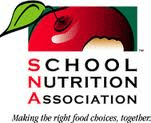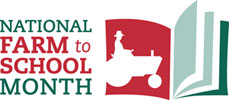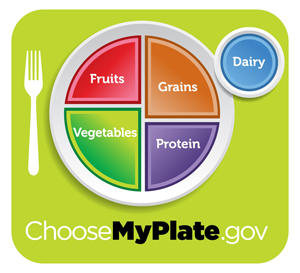Read the label, be an educated consumer.
Wednesday, September 10, 2025
TV Dinner Day
Tracing the Roots of Modern Day Obesity
Tracing the Roots of Modern Day Obesity
Read the label, be an educated consumer.
Monday, October 14, 2024
National School Lunch Week
"In the long view, no nation is healthier than its children,
or more prosperous than its farmers." - President Harry Truman, on signing the 1946 National School Lunch Act.
Through the Years
The National School Lunch Program was created in 1946 when President Truman signed the National School Lunch Act into law. The National School Lunch Program is a federal nutrition assistance program. Through the years, the program has expanded to include the School Breakfast Program, Snack Program, Child and Adult Care Feeding Program, and the Summer Food Service Program. In 1962, Congress designated the week beginning on the second Sunday in October each year as "National School Lunch Week."
The video below looks at the school lunch program from the late 1930s to the present day and includes President Obama signing the Healthy, Hunger-Free Kids Act. One can see from the photographs some of the changes in the foods provided. There is an increase in whole grains, fruits, vegetables, lean protein, and low-fat dairy. (Part of the video has clips from a film produced by the USDA in the mid-60s.)
School Lunch Resources
Tom Vilsack, Secretary of Agriculture, stated: “National School Lunch Week reminds us how important it is that our children be healthy and active, that they do not go hungry, and that they have access to nutritious meals."
| ||||||||||||||||||||||||||||
Sunday, April 24, 2022
Egg Salad Week - Food Safety and Recipes
Food Safety
If you plan to eat the Easter eggs you decorate, be sure to use only food-grade dye. (Some people make two sets of eggs - one for decorating and hiding, another for eating. Others use plastic eggs for hiding.) For an Easter egg hunt, avoid cracking the eggshells. If the shells crack then bacteria could enter and contaminate the egg inside. Also, hide eggs in places that are protected from dirt, pets, and other bacteria sources and keep hard-cooked eggs chilled in the refrigerator until just before the hunt. The total time for hiding and hunting eggs should be no more than two hours. Then be sure to refrigerate the "found" eggs right away until you eat them. Eggs found hours later or the next day should be thrown out — not eaten!
When shell eggs are hard-cooked, the protective coating is washed away, leaving open pores in the shell where harmful bacteria could enter. Be sure to refrigerate eggs within two hours of cooking and use them within a week. Check your refrigerator temperature with an appliance thermometer and adjust the refrigerator temperature to 40°F (Fahrenheit) or below.
Resources
1. Egg Salad, Lightened Up. Egg salad can be high in fat, cholesterol, and calories but with a few simple tweaks, you can make light and delicious versions of this comfort food classic. Dana Angelo White #RDN
Tuesday, November 24, 2020
National Farm-City Week - Harvesting Healthy Choices
Statistics indicated that about one-third of American children ages 6 to 19 are overweight, and a growing number of young people suffer from cardiovascular disease, high cholesterol, Type 2 diabetes, and high blood pressure.
Farm-City theme of “Harvesting Healthy Choices” gives farmers an opportunity to join forces with their city neighbors to show healthy food choices available.
Harvesting Healthy Choices allows the opportunity to talk about the health benefits of locally grown produce and other foods:
- the leaner choices in beef, pork, and poultry;
- the importance of folic acid-rich peanuts to expectant mothers;
- the cancer-fighting properties of soybeans;
- the antioxidant power of blueberries
Friday, December 30, 2011
Quiz: How much time does your physician
spend discussing nutrition and/or your diet with you?
spend discussing nutrition and/or your diet with you?
The following questions were created to determine your interaction and confidence in your physician on the subject of nutrition and/or dieting. In addition, based on your responses, I urge you to read the CMS decision to cover "Obesity Therapy" and sign a petition to include the Registered Dietitian (RD), as a covered practitioner. Petition http://wh.gov/DWX
Background/Definitions
None of the above mentioned practitioners (except the RD) have required courses in Obesity Therapy and many have limited nutrition education. The RD has the education and experience to implement an Obesity Therapy component, in addition to practitioners in the field of psychology.
Who is a Registered Dietitian?
A Registered Dietitian (RD) is a food and nutrition expert who has met academic and professional requirements including:
1. Earned a bachelor’s degree with course work approved by ADA’s Commission on Accreditation for Dietetics Education. Coursework typically includes food and nutrition sciences, medical nutrition therapy, physiology, microbiology, chemistry, biochemistry, psychology, sociology, foodservice systems management, business, computer science and economics.
2. Completed an accredited, supervised practice program at a health-care facility, community agency or foodservice corporation;
3. Passed a national examination administered by the Commission on Dietetic Registration; and
4. Completes continuing professional educational requirements to maintain registration.
Approximately 50% of RDs hold advanced degrees. Some RDs also hold additional certifications in specialized areas of practice, such as Adult Weight Management; Childhood and Adolescent Weight Management; Level 2 Adult Weight Management; pediatric or renal nutrition, nutrition support and diabetes education.
To learn more about the role of the RD visit http://www.eatright.org/
Quiz
1. Has your physician ever discussed nutrition and/or your diet with you?
a. No b. Not Sure c. Yes
2. Has your physician ever said to you, “You need to go on a diet?”
a. No b. Not Sure c. Yes
If you answered “not sure”, consider signing the petition.
If no, you are probably in good health or you need a new doctor.
3. How much time did your physician (or nurse) spend on the following Nutrition and Dietary Assessments and Plan of Care Tools or Programs?
(1) Conduct a Dietary History
a. 0 to 1 minute b. 1 minute to 3 minutes c. Greater than 3 minutes
(2) Evaluate a Food Journal or Food Recall
a. 0 to 1 minute b. 1 minute to 3 minutes c. Greater than 3 minutes
(3) Provide Diet Instructions
a. 0 to 1 minute b. 1 minute to 3 minutes c. Greater than 3 minutes
(4) Teach Behavior Modification Techniques
a. 0 to 1 minute b. 1 minute to 3 minutes c. Greater than 3 minutes
(5) Assist with Meal Planning
a. 0 to 1 minute b. 1 minute to 3 minutes c. Greater than 3 minutes
(6) Help with recipe modifications
a. 0 to 1 minute b. 1 minute to 3 minutes c. Greater than 3 minutes
Score. Count the number of times you chose “a”, “b” and “c”.
a: _______ b. _______ c: ________
Please sign the Petition
Help Stop the Obesity Epidemic
Petition
http://wh.gov/DWX
Conclusion
Obesity is a risk factor associated with numerous chronic diseases (heart disease, diabetes, cancer, etc). Over the last 20 years, the incidence of obesity in the U.S. has dramatically increased.
From: CDC, U.S. Obesity Trends National Obesity Trends
“About one-third of U.S. adults (33.8%) are obese. Approximately 17% (or 12.5 million) of children and adolescents aged 2—19 years are obese. During the past 20 years, there has been a dramatic increase in obesity in the United States and rates remain high. In 2010, no state had a prevalence of obesity less than 20%. Thirty-six states had a prevalence of 25% or more; 12 of these states (Alabama, Arkansas, Kentucky, Louisiana, Michigan, Mississippi, Missouri, Oklahoma, South Carolina, Tennessee, Texas, and West Virginia) had a prevalence of 30% or more.”
In over 30 years as a practicing RD, I have never seen a primary care physician sit with a patient to go over a diet history, food recall, diet instruction, behavior modification, meal planning, and/or recipe modifications. My current doctor still provides diet handouts from pharmaceutical companies.
Based on the current CMS decision, the cost of Obesity will go higher, as people get larger because of inadequate "Obesity Therapy".
Help Stop the Obesity Epidemic
Tuesday, October 11, 2011
National School Lunch Week
October 10 – 14, 2011
October 10 – 14, 2011
|
"In the long view, no nation is
healthier than its children, or more prosperous than its farmers." - President Harry Truman, on signing the 1946 National School Lunch Act.
Through the Years
The National School Lunch Program was created in 1946 when President Truman signed the National School Lunch Act into law. The National School Lunch Program is a federal nutrition assistance program. Through the years, the program has expanded to include the School Breakfast Program, Snack Program, Child and Adult Care Feeding Program and the Summer Food Service Program. In 1962, Congress designated the week beginning on the second Sunday in October each year as "National School Lunch Week."
The video below looks at the school lunch program from the late
1930’s to the present day and includes President Obama signing the
Healthy, Hunger-Free Kids Act. One
can see from the photographs some of the changes in the foods
provided. There is an increase in whole grains, fruits, vegetables,
lean protein and lowfat dairy. (Part
of the video has clips from a film produced by the USDA in the
mid-60s.)
School Lunch Resources
Additional Resources
The
Chefs Move to Schools program, run through
the U.S. Department of Agriculture, will help chefs partner with
interested schools in their communities so together they can create
healthy meals that meet the schools’ dietary guidelines and budgets,
while teaching young people about nutrition and making balanced and
healthy choices. Healthy, Hunger-Free Kids Act of 2010 (HHFKA). Improving child nutrition is the focal point of the Healthy, Hunger-Free Kids Act of 2010 (HHFKA). The legislation authorizes funding and sets policy for USDA's core child nutrition programs. The Healthy, Hunger-Free Kids Act allows USDA, for the first time in over 30 years, opportunity to make real reforms to the school lunch and breakfast programs by improving the critical nutrition and hunger safety net for millions of children.
Final Rule (pdf): Cooperation in USDA Studies and Evaluations, and Full Use of Federal Funds in Nutrition Assistance Programs Nondiscretionary Provisions of the Healthy, Hunger-Free Kids Act of 2010, Public Law 111-296 (6/29/11)
Priceless: School Lunch
"Priceless" launched the
One Tray
campaign depicting the cafeteria tray as the conduit for a reformed
school food system that supports healthy children, local farms, and
smart schools. The video was created by three IATP Food and Society
Fellows, Shalini Kantayya, Nicole Betancourt, and Debra Eschmeyer to
raise awareness for the Child Nutrition Act.
Tom Vilsack, Secretary of
Agriculture stated “National School Lunch Week reminds us how
important it is that our children be healthy and active, that they
not go hungry, and that they have access to nutritious meals."
|
||||||||||||||||||||||||||||||
Wednesday, November 17, 2010
Dear Congress. Please Pass the Nutrition Bill
Don't Let Our Children Go Hungry
Don't Let Our Children Go Hungry
As a registered dietitian and an educator, I know hunger and inadequate nutrition impacts the ability to learn. Hungry children lack concentration, are often irritable and more likely to become ill. In contrast, students who come to class well-nourished have fewer behavioral and attendance problems, and have higher test scores.
The Healthy, Hunger-Free Kids Act offers a real chance to improve nutrition for all children. By improving opportunities for healthy meals in and out of school, the bill would take an important step forward in addressing both child hunger and obesity.
The bill would help reduce hunger and increase children's access to healthy meals, including by better connecting eligible children with free school meals. It would also authorize grants to retain summer food program sponsors, improve and expand breakfast programs, and encourage states to develop comprehensive strategies to end child hunger.
Thank you for your consideration of my views on these important issues.
Sincerely,
Sandra Frank, Ed.D., RD, LDN
Friday, March 26, 2010
Will Dieting Make You Fat?
from Dr. Sharma's Obesity Notes » blog by Arya M. Sharma, MD
Does this in fact happen? Is excess weight gain perhaps even a natural consequence of trying to control your weight by dieting?
This question was now addressed by Jennifer Savage and Leann Birch from Pennsylvania State University in a study published this month in OBESITY.
A total of 176 women were assessed at baseline and followed over four years. Three groups of women were identified: those making no effort to control their weights (N; 23%), those using healthy strategies (H; 43%) and those using both healthy and unhealthy strategies (H+U; 35%).
Despite adjustment for numerous confounders like education, income, and initial BMI, women using both healthy and unhealthy strategies (H+U) gained significantly more weight (4.56 kg) than the N group (1.51 kg) and H group (1.02 kg) over the four year observation period.
Interestingly, these differences were already apparent in the third year, when the H+U group gained significantly more weight (2.86 kg) than the H group (0.03 kg) and N group (0.44 kg).
Perhaps not surprisingly, the H+U weight control group had higher scores on weight concerns, dietary restraint, and had poorer eating attitudes than women in the H or N groups.
Healthy strategies included reducing calories and amount of food, eliminating sweets, junk food and snacks, increasing activity, eating more fruit and vegetables, eating less fat or less high-carb foods, and eating less meat.
Unhealthy strategies included skipping meals, using diet pills, liquid diets, appetite suppressants, laxatives, enemas, diuretics, and fasting.
These findings suggest that self-reported weight control attempts do not necessarily lead to large weight gains, but using unhealthy strategies to control weight does.
As the authors point out, the main reason that women who used healthy weight control strategies were probably more successful was simply because these strategies are more sustainable than the unhealthy strategies like fasting, skipping meals or using liquid diets or pills, which may simply lead to loss of control, overeating and excess weight gain over time.
Another important aspect of this study noted by the authors is that women with greater weight concerns were apparently more likely to engage in unhealthy practices thus setting themselves up for greater weight gain in the long run. This point, if validated in other studies, clearly sends a warning that simply promoting weight concerns may actually exacerbate weight problems in the long run.
Thus, providing proper guidance on healthy weight loss strategies is essential to avoid making the problem worse than it already is.
On the other hand, the study also shows that women who adopt healthy weight control techniques can very much minimise weight gain over time, even if no actual weight is lost in the long run.
AMS
Edmonton, Alberta
Dietitian Blog List
-
Egg White Grill (Chick-fil-A Copycat!) - Skip the drive-thru and make these protein-packed egg white grill breakfast sandwiches at home! This Chick-fil-A copycat recipe features juicy grilled chic...19 hours ago
-
For the Best Easy Snack, I Couldn't Live Without These 5-Ingredient Energy Bites - Great for busy days. *READ MORE...*22 hours ago
-
Sticky Chocolate Cake and More Recipes We Made This Week - Like loaded sweet potatoes and cider-braised chicken.3 days ago
-
Tips for Visiting Kenya - We had the privilege of visiting Kenya this summer to do a safari. We went with my Dad and also met my brother and sister in law and their kids there. ...2 months ago
-
Study suggests obesity contributes to anxiety and cognitive impairment - EurekAlert! - Study suggests obesity contributes to anxiety and cognitive impairment EurekAlert!7 months ago
-
8 Healthy Foods Safe to Go Down the Garbage Disposal - A garbage disposal is a convenience, but it cannot help you if you place the wrong things inside. When you do this, it can create clogs, lead to smelly odo...11 months ago
-















